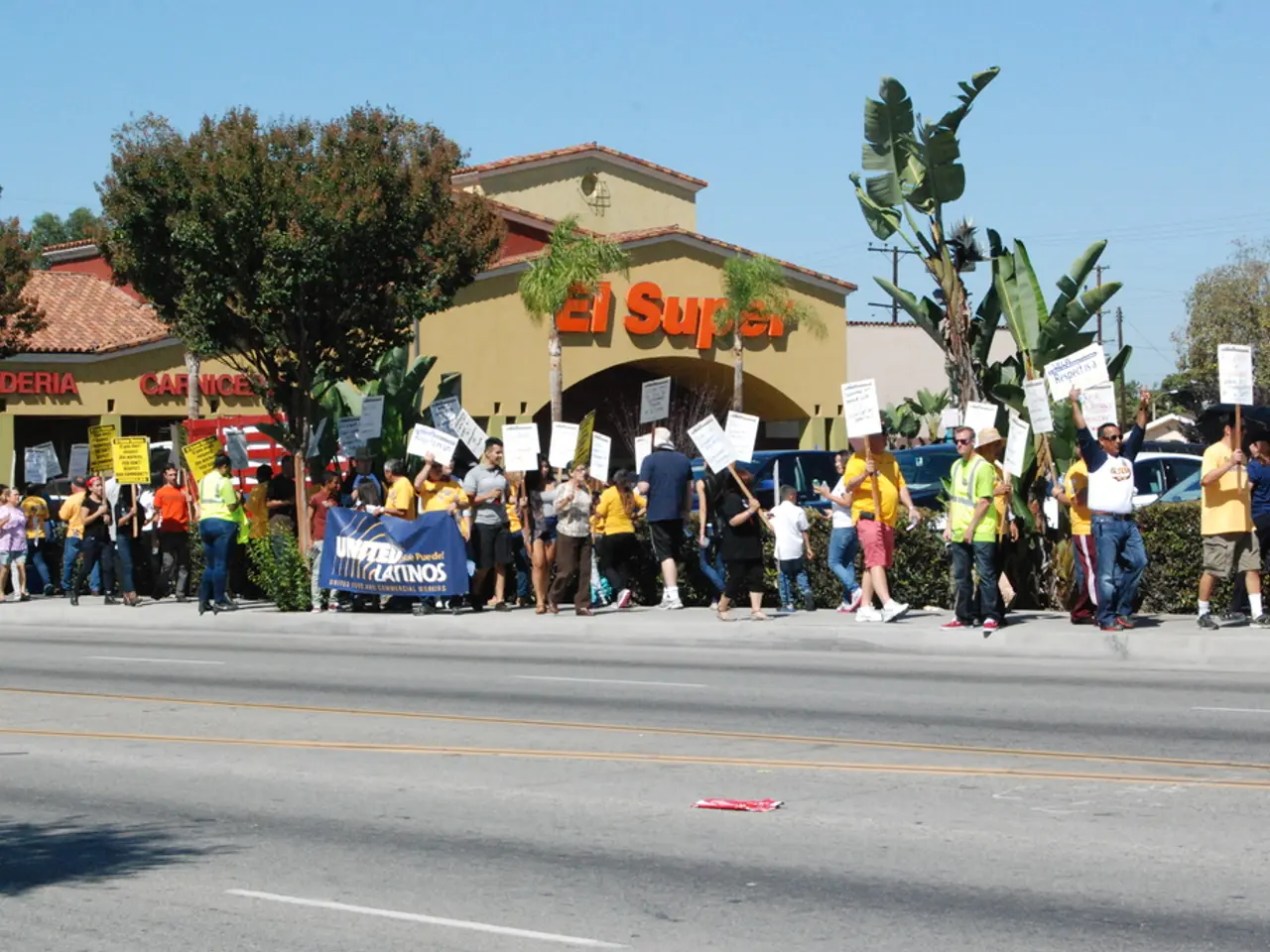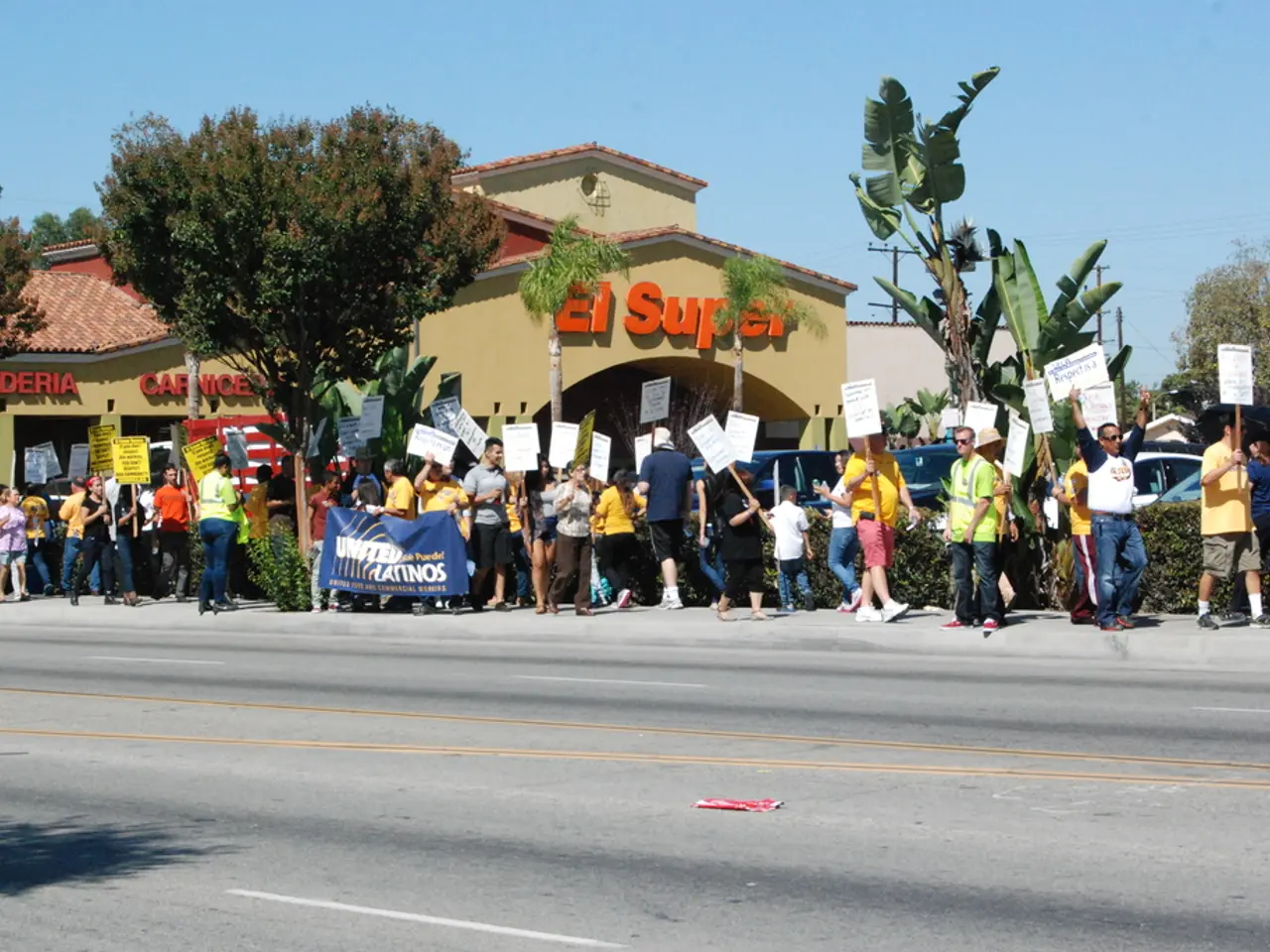Grassroots Political Movements: The Value of Grassroots Election Efforts
In the realm of modern politics, grassroots campaigns have emerged as a potent force, offering a unique blend of personal connections and digital engagement. These bottom-up political strategies, driven by local volunteers and community leaders, are proving to be effective in elections across the globe.
Grassroots campaigns are characterized by their emphasis on face-to-face outreach, local networks, and decentralized action. Key components of such campaigns include door-to-door canvassing, phone banking, local event organizing, WhatsApp group engagement, voter surveys, and volunteer mobilization.
Door-to-door canvassing, regarded as the most personal and effective outreach method, enables face-to-face conversations that build trust and gather voter concerns directly. This method allows for real-time feedback, increases the likelihood of voter turnout, and provides an opportunity to address voter concerns on the spot.
Phone banking, both digital and in-person, remains essential in scaling grassroots efforts. This tactic involves calling voters for real-time conversations to identify supporters and gather feedback.
Text messaging, a high-open-rate method, is another powerful tool in the grassroots campaigner's arsenal. It allows for the sharing of event information, reminders, and increases name recognition via multimedia content.
Online petitions and click-to-call campaigns efficiently engage supporters by enabling easy action, such as contacting legislators with prepared scripts. These methods show measurable impact and help track supporter data.
Hosting events and house parties, both in-person and virtual, enable deeper engagement and build momentum through word-of-mouth. These gatherings provide a platform to connect with voters, demonstrate support, share the campaign vision, and create memorable emotional experiences.
Social media platforms like Facebook, Instagram, and TikTok allow campaigns to meet voters where they are, expanding reach with consistent and authentic posting. These platforms offer an excellent opportunity to engage with voters, address their concerns, and build a strong online presence.
Relational organizing, leveraging personal relationships to activate wider networks of supporters, is also a powerful technique to deepen support and turnout. This strategy builds long-term engagement and trust, which is critical for sustained campaign success.
Technology plays a significant role in grassroots campaigns. CRM tools, WhatsApp groups, geotargeted outreach, mobile survey platforms, and social media are used to streamline communication, coordinate voter lists, and reach voters efficiently.
Grassroots campaigns are particularly effective in digital-first elections, as digital tools enhance rather than replace grassroots methods, allowing campaigns to scale local conversations and reach voters efficiently. Moreover, grassroots campaigns can counter disinformation through trained volunteers and local groups who can fact-check, clarify rumors, and restore credibility through trusted human interactions.
Community events provide a platform to connect with voters, demonstrate support, share the campaign vision, and create memorable emotional experiences. Communicating in the local language is critical in grassroots campaigns as it builds trust, ensures clarity, and resonates more deeply with voters.
The importance of booth-level committees lies in their ability to coordinate voter lists, polling-day mobilization, and targeted outreach. These committees, which are the most localized units of campaign execution, help ensure hyperlocal reach and play a decisive role in influencing voters.
Post-election, a candidate can sustain a grassroots movement by continuing community engagement, fulfilling promises, and staying active through local initiatives. This approach makes the grassroots network a long-term asset, fostering community involvement and building trust.
In conclusion, effective strategies for grassroots political campaigning include a mix of direct voter contact, digital engagement, and volunteer mobilization. These strategies collectively help grassroots campaigns scale their impact by turning supporters into active voters and lifelong advocates. Tips for success include using integrated advocacy software to track participation and streamline communication, crafting clear messaging with strong calls-to-action, and combining multiple outreach channels for maximized impact.
Ads promoting grassroots campaigns often use multimedia content and clear messaging with strong calls-to-action on social media platforms like Facebook, Instagram, and TikTok.
Campaign volunteers use technology, such as CRM tools, mobile survey platforms, and WhatsApp groups, to fact-check, counter disinformation, and restore credibility in a digital-first election.
Community events, whether held online or in-person, offer opportunities to build trust, share the campaign vision, and mobilize volunteers, critical for sustained campaign success.
To sustain a grassroots movement post-election, a candidate can continue community engagement, fulfilling promises and staying active through local initiatives, turning supporters into lifelong advocates.








